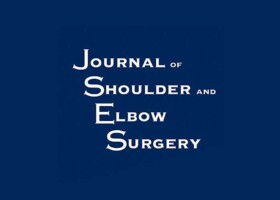
Authors:
Haskel JD, Wang KH, Hurley ET, Markus DH, Campell KA, Alaia MJ, Millett PJ, Jawrawi LM.
Abstract:
Background:
The purpose of this study was to review the literature to ascertain the functional outcomes, recurrence rates, and subsequent revision rates following revision arthroscopic Bankart repair.
Methods:
Two independent reviewers performed a literature search based on PRISMA (Preferred Reporting Items for Systematic Reviews and Meta-analyses) guidelines using the Embase, MEDLINE, and Cochrane Library databases. Studies in which arthroscopic Bankart repair was performed as a revision procedure were included. The clinical outcomes extracted and analyzed were functional outcomes, return to play, and recurrent instability.
Results:
Fourteen studies with 433 patients met the inclusion criteria. The majority of patients were male patients (63.7%); the average age was 26.1 years (range, 14-58 years), and the mean follow-up period was 37.6 months (range, 10-144 months). The mean Rowe score was 84.2, and 79.7% of patients had good to excellent outcomes. The rate of return to play was 78.5%, with 47.5% of patients returning to their preinjury level of play across 10 studies. The rate of recurrent instability was reported in 12 studies, with 328 shoulders demonstrating 86 instability events (26.2%). The rate of recurrent instability due to dislocation was reported in 7 studies (n = 176), with 19 events (10.8%), whereas the rate of subluxation was reported in 4 studies (n = 76), with 6 events (7.9%).
Conclusions:
Revision arthroscopic Bankart repair for anterior shoulder instability was shown to result in a high rate of recurrent shoulder instability. There was a relatively poor rate of return to sport among athletes, and only about half of the patients were able to return at or above their preoperative level of ability.
You can request the study:
